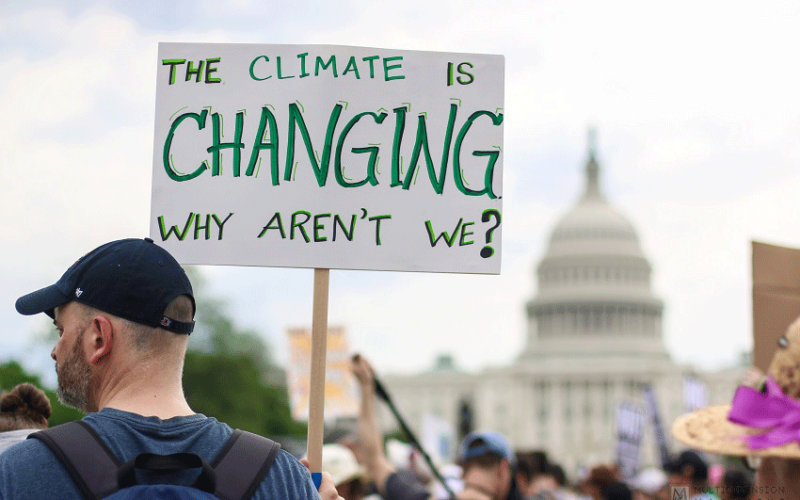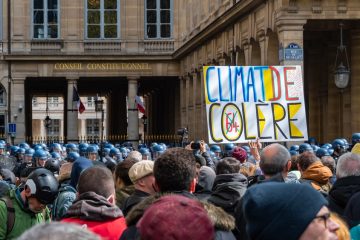Written by : Dr. Ananya Mukherjee
Photo : Shutterstock.com
If you don’t completely understand what constitutes climate change, let me help you out- global CO2 levels have risen to 417ppm, a 43.5ppm jump from the year 2000, sea levels have risen 3.4mm per year, arctic sea ice has fallen to 13% since 1979 and we have had 19 warmest years since 2000. If this doesn’t sound ominous to you then you are probably not grasping the full extent of damage that we have caused and continue to cause the planet.
To prevent causing irreparable damage, every year world leaders and policy makers meet to agree on climate change directives across the world, also known as COP or UN Conference of Parties. It started in 1992 when countries agreed for the first time that greenhouse gas emissions need to be tackled to reduce global warming. In 2015 the Paris Climate agreement declared that global temperature needs to be reduced by 2º Celsius to ease lasting effects of global warming. The main goal of these meetings is to cut emissions to net zero by 2050 and help poorer countries switch to clean energy. Many poorer countries bear the brunt of climate change the most, despite having contributed the least towards it. Restoring and preserving forests, reducing coal usage, and coming up with overall better climate strategies are some other goals of COP. These meetings are attended by heads of states, policymakers, UN experts, heads of NGOs to bring forth real change in the world.
COP25 was disappointing to say the least and everyone’s eyes were on COP26 to take the long promised necessary steps towards reversing climate change. This year COP26 was held in November in Scotland where the UK partnered with Italy to host it since the pandemic. The expectation from COP26 was immense, mainly because if greenhouse gas emission isn’t reduced by 45% by 2030, our chances of being net zero by 2050 will dwindle drastically. Unfortunately, even though several plans to achieve this target were made, lack of concrete implementation will lead to a 13.7% increase in emissions, setting us back by a big margin. One of the many things of note that occurred during COP26, is the demand by vulnerable nations for a climate emergency pact. Vulnerable nations from Africa, Asia, the Caribbean, Latin America, the Middle East, and the Pacific demanded $100 billion from developed nations to implement and mitigate losses suffered by the nations due to the ongoing climate crisis. Unsurprisingly these nations have contributed the least and suffered the most due to our changing climate. Sadly, this promise was made and broken in 2020 as well. The Glasgow Climate Pact only made calls to urge countries to make the $100 billion contribution when in reality, trillions of dollars in reparation will be needed in the future. On a slightly brighter note South Africa has attracted $8.5 billion from UK, Europe and US to help it switch from coal based energy to cleaner energy.
States were urged to reduce coal usage and phase out fossil fuel subsidy. Canada’s Powering Past Coal Alliance was joined by 28 new countries during COP26. However, the fossil fuel lobby was big at the summit. There were more members from the fossil industry than state delegates. Many believe they need to be banned at the next COP as their looming presence prevents implementation of urges made during the summit to cut down on fossil fuels. Added to that there has been some serious blame game on China and India as both nations pressured to “phase down” not “phase out” the coal agreement. As two coal intensive nations, this can prove to be an issue if we wish to aim for the 1.5ºC warming limit mark by 2050. This ties in with methane reduction as it majorly comes from coal and gas. However, we cannot just blame India since it belongs to the list of countries that have limited natural gas supply. Unlike India, UK has reduced its coal usage by 30% and switched to mostly natural gas supply for its energy needs. Natural gas burns cleaner due to its chemistry, which is carbon and hydrogen that can store a lot more energy than coal which produces more CO2 when it burns. However, India and such other countries that are heavily reliant on coal for their energy needs, need financial aid from richer nations to make the switch.
One glaring issue with COP26 was the absolute lack of clarity with respect to media reports. Many political journalists played up the success of the summit since it is tied closely to the success of Prime Minister Boris Johnson. For instance, the pledge to reduce methane was played up heavily in the first week of the summit whereas week two negotiations and real decision making hadn’t even started. The prime minister also focused heavily on ‘coals, cars, cash and tress’ while completely ignoring cows- the food industry which is responsible for a quarter of human made greenhouse gases. Both deforestation and methane emissions can be reduced by reducing meat and dairy production. It is evident that in the future, UK needs to put the pressure on pledging G20 nations to carry out their pledges. As China reminded everyone at COP26, goals need to be implemented for them to work. Because right now the pledges sound glorious but they don’t mean much unless they are followed up by actions.
Climate isn’t only about adaptation and changes but it is also about repairing damages and losses. While ‘loss and damage’ was mentioned nearly 12 times in Glasgow, no commitments to secure funding for the same were made. This has only further disappointed and angered already suffering nations. With the next summit scheduled to be held in Africa, funding may become the central question that world leaders will be forced to answer. While a lot of promises were made about reducing emissions and transferring funds and technology to developing nations, these are just that- promises. Unless these are added to the Nationally determined contributions and made legally binding not a lot can be achieved. Several activists and scientists have expressed frustration and overall dismay at the same promises that have been made over and over again since 2015. However it is a critical time to actually implement these, because we still have a semblance of hope to meet the 1.5ºC warming limit by 2050. So here’s hoping world leaders and policy makers actually fulfill some of the tall promises.
Read More :
Can genetic manipulation of plants combat climate changes?
About the author :
Dr. Ananya Mukherjee
Department of Biological Sciences, Louisiana State University, Baton Rouge, LA 70803




